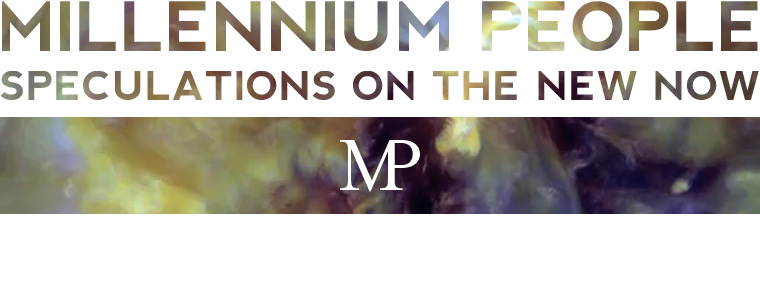
Guest post by Max Rosin-Melser.
In the second post on the book ‘Anti-Object’ [#1 here] Jack asked the question – what is an architectural object? For this third and final ‘Anti-Object’ post I would like to build on Jack’s question and ask, what is actually wrong with the architectural object? Kuma makes the claim that moving away from a focus on the ‘object’ in architecture is not only useful, but a manifestation of new, important trends in contemporary society linking in with new media and technologies. I would like to question this idea – Why is this move away from an object-oriented architecture essential? Where does this need originate from? And is our current state of object-oriented architectural production really failing us as a people (as Kuma quite broadly claims)?
I can’t help wondering if what Kuma is proposing is more of a theoretical idea out of step with what people actually want and with what has proven to be popular with buildings of the past. Now, this is not to say that architectural theories cannot challenge the current wants of society (no one is saying people should go live in suburbs of McMansions), but, the way Kuma stresses this need to move away from the object you would think it was actually doing us and society harm. Within each section of the book there is mention of Kuma proposing some change merely based on a desire for his building to ‘not resemble an object’. This begs the question – do we really need to be saved from the architectural object? What of good architectural objects? Yes there is a lot of crap out there, a lot of bad architecture, but there are also a lot of successful object oriented buildings in the world - See Herzog and De Meuron and the almost universally loved bird’s nest for the most conspicuous object oriented architecture of contemporary times. This building, through its very object-like properties (the ‘birds nest’) has been used by the Chinese government to distill and outwardly represent notions of growth and prosperity for its country. Could a Kuma building elicit the same emotive response in its users and the society as a whole?
The architect Peter Zumthor is similar to Kuma in his focus on the subject and the experiential properties of his buildings, but rather than engineering some sort of anti-object stance, prefers to look at atmospheres . He does not try to make the claim that the object is inherently ‘bad’, but rather looks at how this type and form can be worked to evoke certain atmospheres and emotions in its users. Yes, when Zumthor puts you in a black room with only a small punched out window (as below) towards the outside he is distancing us from our environment through the use of the ‘window frame’ – But cant that be worth it sometimes? We Australians who grew up with Glenn Murcutt’s maxim drilled into our heads of ‘prospect and refuge ’ might wonder – where do you find refuge in a glass ‘optical lens’ surrounded by water? Where is there room for these very human feelings and requirements of retreat and withdrawal within Kuma’s architectural theory?
Fundamentally, Kuma sees the architectural object as separate and detached from man and society, however, this over-simplifies the role that these object-oriented buildings play in our psyche. In contrast to Kuma’s stance, Charles Jencks embraces the notion of an object-oriented architecture and highlights in his book The Iconic Building the ability of these buildings to operate as a latent signifier of divergent and ambiguous meanings. In other words, the Sydney Opera House can, to one person represent the sails of a boat, to another it could evoke an image of clouds floating and to yet another it could be interpreted as turtles... well you get the idea. And it is that inherent fluidity of meaning that brings life to the building and allows for a growing dialogue between the building and society. These objects are not detached and separate from us, but rather made and re-made in a continual conversation of use and media over successive generations. In the end I feel there is an irony present in Kuma’s work, in that he is not making anti-objects, he is just making a different type of object, and when his discussion moves on from there I think it will be rather fascinating.


No comments:
Post a Comment